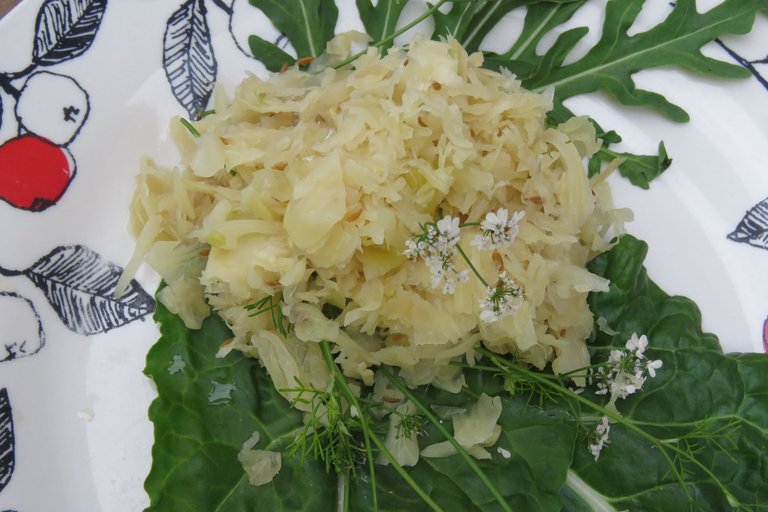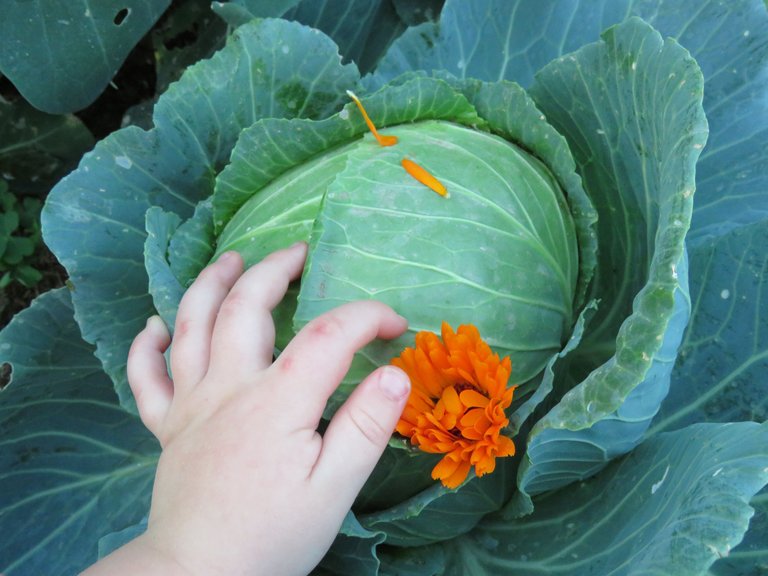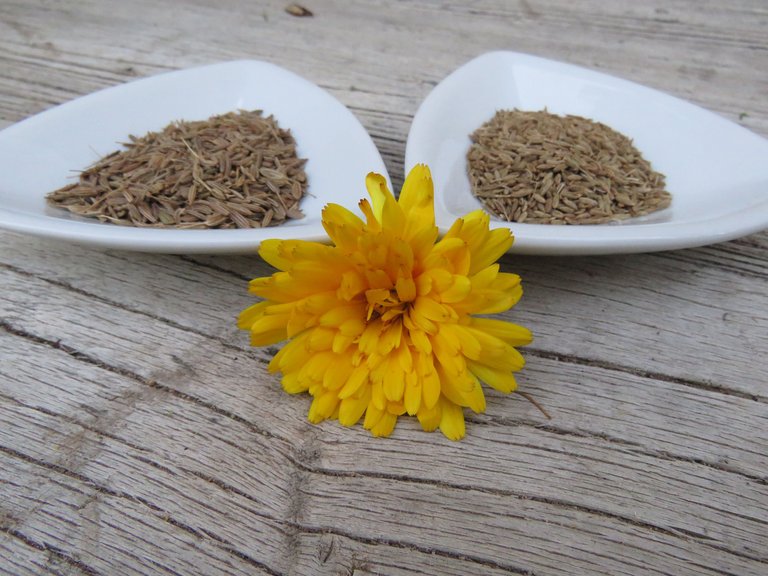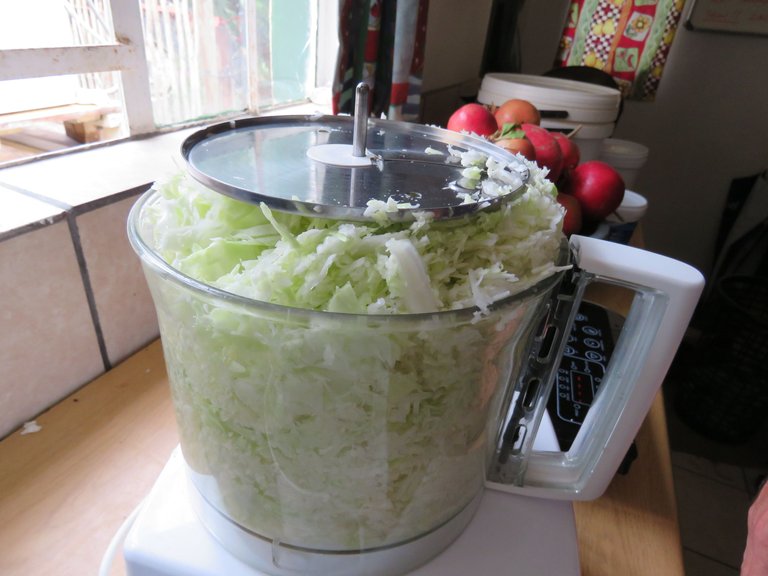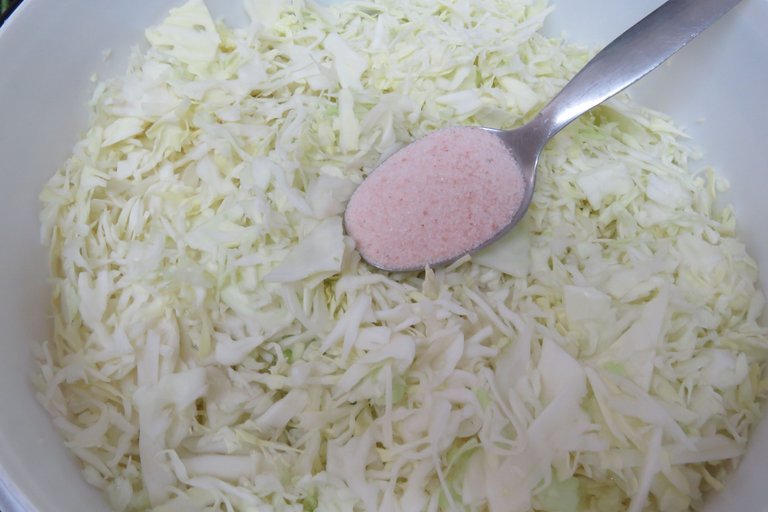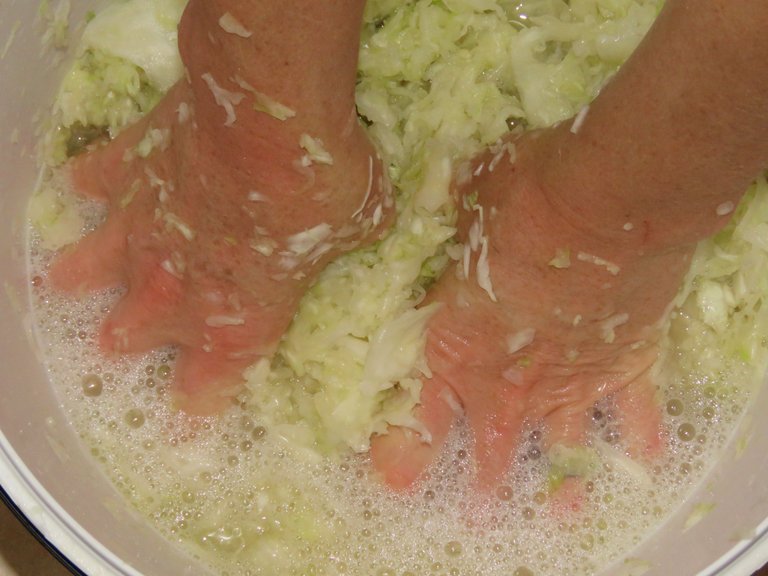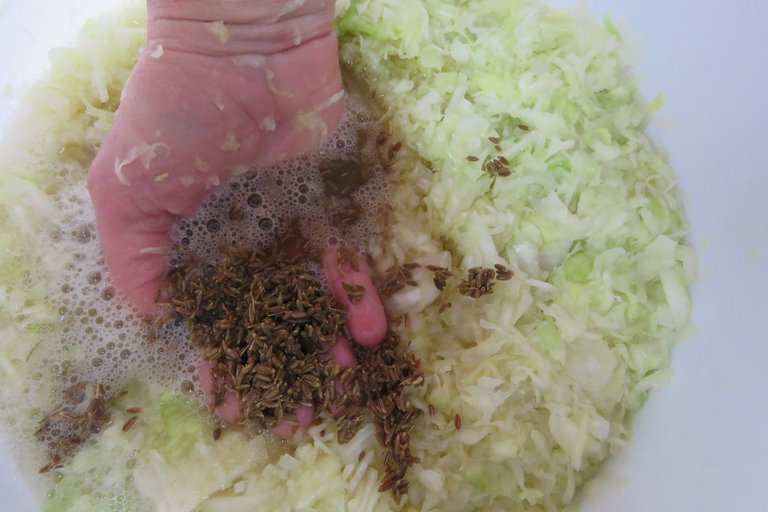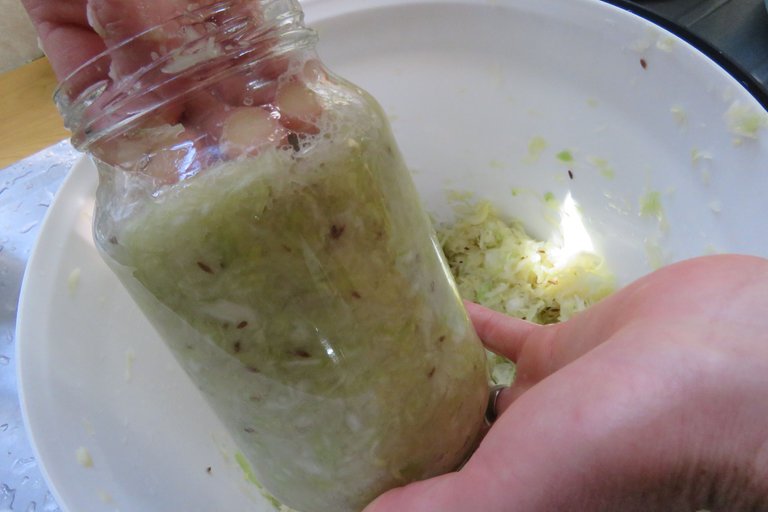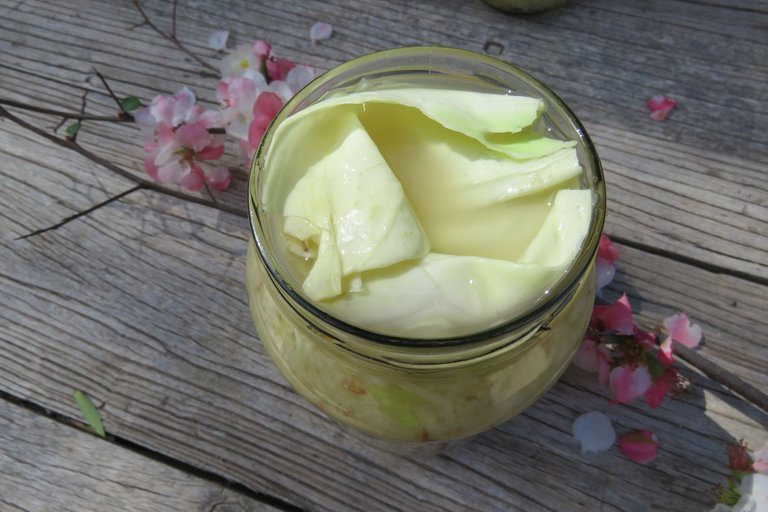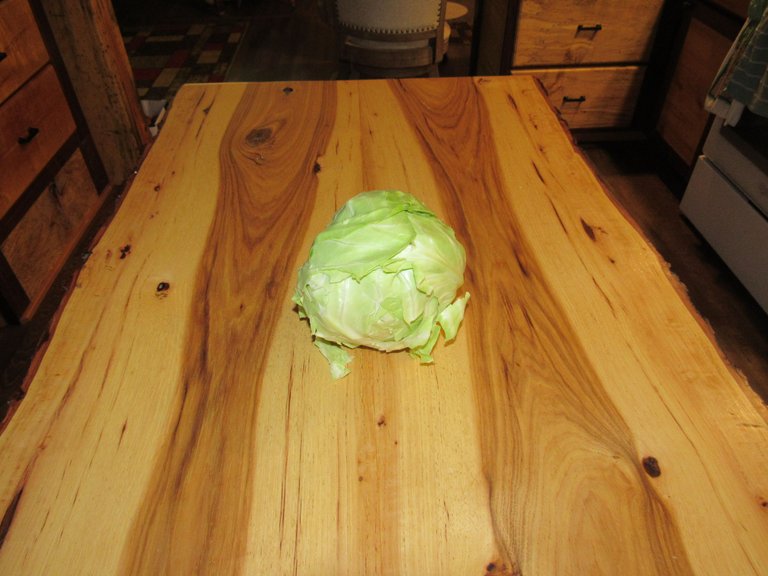It is strangely calming to pulverize a cabbage - then benefit with a healthy gut and stronger immune system! Making sauerkraut is healthier than pounding a punching bag. And strangely satisfying. While I don't have anger issues, pulverizing a cabbage certainly gives me sufficient work-out! It is also an amazing alternative salad when our extreme temperatures on the homestead do not allow for year around lettuce. Me not having my daily salad will certainly give me cause to want to pulverize something!
Although sauerkraut is a national German dish - usually accompanying extremely fatty foods, the more popular being sauerkraut and sausage - it is thought to have been invented by the Chinese. The Chinese fermented cabbage in rice wine way before the Europeans caught on. Eventually, however, the Germans claimed and named it; Sauer (sour) and Kraut (cabbage). To prevent scurvy there are records that ships on long voyages fed sauerkraut to their sailors. I also found a rather telling quote by the Roman Plinius Secundus: "Cabbage gives a lot of milk to nursing mothers, helps with dull eyes, has a positive effect on headaches and should be beneficial after a high alcohol consumption."
Heat from cooking veggies destroys a lot of the enzymes and vitamins but a natural fermentation preserves all the goodness while also enhancing good bacteria. The wonderful fermentation process converts the natural sugars to lactic acid and is a superfood for the gut. Although the favourite and fastest fermented food to make, the Buckaroo Tribe, love our fermented superfoods.
SAUERKRAUT RECIPE:
1 Large cabbage
1 tablespoon himalayan salt
1 teaspoon caraway seed
1 teaspoon fennel (or cumin) seed
1/2 filtered water
Peel off the outer leaves of the cabbage. Keep one or two leaves to use later in submerging the sauerkraut. Stir the fennel (I used cumin) and caraway seeds into your half cup of filtered water and allow to stand for at least an hour. Apart from adding a mild flavour the seeds promote better digestion.
Finely shred your cabbage. Remove the hard inner bits. My chickens are always grateful for the veggie bits that get tossed out of the kitchen. The harder bits don't shred easily and they also don't soften in the fermentation process. Once your entire cabbage is shredded put it in a large mixing bowl. I usually work two or three cabbages at a time and so I need a large 10 litre bucket for the next step. Sprinkle the heaped tablespoon of salt over the cabbage. Salt is a natural preserver and cutting back on the quantity could allow bad bacterial growth.
Make sure your hands are well washed - and then give your cabbage a good massage! This is where you can really work out any frustrations. Massaging the shredded cabbage will take roughly 10 minutes - more if you have anger issues. Before long the cabbage will release its wonderful juices.
Once your cabbage is slightly opaque and you have a fair amount of juice, pour in the water with the caraway and cumin seeds. Mix the seeds thoroughly through the cabbage. If you have a crock and an airlock that is ideal however for most we settle for basics from the kitchen. Just ensure everything is sterilized and that you are on top of anything that can interfere with good bacteria.
The amount from one large cabbage will fill about three 1 litre jars. Make sure they are well washed and sterilized before filling! This is essential in preventing bad bacterial growth. Then begin to pack in the cabbage very well. You can use a sterilized spoon but I prefer doing it by hand as I can press in the cabbage ensuring there aren't air bubbles. Pockets of trapped air can cause a bad fermentation. Pour the remaining liquid between your bottles. Make sure to not overfill the bottles. Also ensure the cabbage remains below the liquid. Carefully press pieces of your saved and clean outer cabbage leaves on top. This has a twofold purpose. Firstly to keep the sauerkraut moist. Secondly to prevent bad bacteria. You can either eat of toss the leaf after a couple days.
Remember! It is essential to use sterilized equipment as well as allow the sauerkraut to begin its fermentation process in the dark. Once filled put the lids on your sauerkraut jars. Keep them in a dark cupboard inside a container that will catch any overflow of liquid. The UV rays will interfere with the natural yeasts and often results in a bad batch of sauerkraut. Every day for the initial three days open the lid and with the back of a big wooden spoon press down the sauerkraut. This releases any gas build up and breaks up the air pockets. You need to prevent bad bacteria. You can safely keep sauerkraut for months, however it is best saved in the fridge. The fermentation will continue but at a slower rate while preventing interference from bad bacterias.
While I've never been a big lover of cabbage, sauerkraut is truly in a league of its own. The slightly soured and salty crunch is wonderful as a snack. Added to a meal it packs a nutritious punch with my family's gut clapping hands all the way. Although the spicy kimchi is a bit more challenging for a child's palate my BuckarooBabies love their sauerkraut. It is asking a lot making everyone wait for a couple weeks while sauerkraut ferments. The bigger challenge is not letting the bottles of yummy sauerkraut be gobbled up before the next batch is made.

